Cusco city
Cusco was the capital of the Tahuantinsuyo (Empire of the Incas). It was a city considered sacred and that today receives thousands of tourists every day. Its streets are welcoming to the visitor. It has restaurants, bars, cafes and hotels to provide a pleasant stay. There you can visit impressive places such as Sacsayhuaman, the Rainbow Mountain and Machu Picchu.
All about the City of Cusco
- Tourist attractions of the city of Cusco
- History of Cusco
- Information and tips for your visit to Cusco
- Cusco is 3,399 meters high (11,151 ft)
- The airport is close to the city
- Bundle up at nights
- Carry money in soles and dollars
- Learn a little spanish
- Machu Picchu is more than 100 kilometers away
- There are luxurious and cheap hotels
- There are restaurants from $ 3
- Cusqueños are very friendly
- Cusco is one of the safest cities in Peru
- Historical Map of Cusco
Explore Cusco
Cusco has a large number of tourist attractions such as archaeological sites, natural landscapes, colonial churches, historical monuments and more.
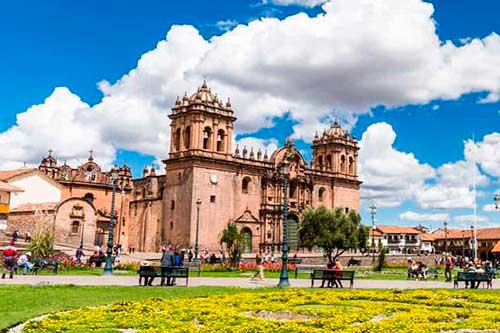
1 Cusco Cathedral
The Cathedral of Cusco is next to the Plaza de Armas. The cost is 25 Peruvian soles (8 dollars). It includes paintings, sculptures, treasures and a lot of history.
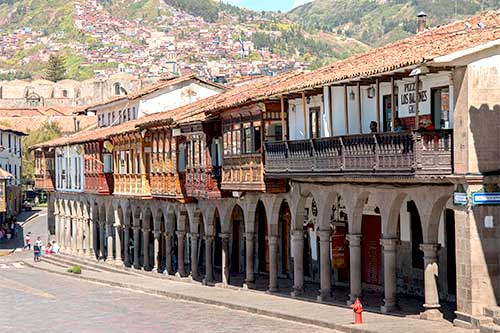
2 Historic center of Cusco
The center of Cusco has Inca sites such as the Coricancha and the Stone of the 12 angles. There are also restaurants, bars, clubs, hotels and more.
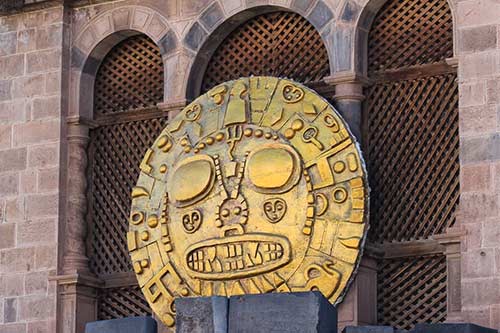
3 Coricancha
Coricancha was the most important Inca religious temple. It is believed that it was covered in gold. The Spanish built the church of Santo Domingo there.
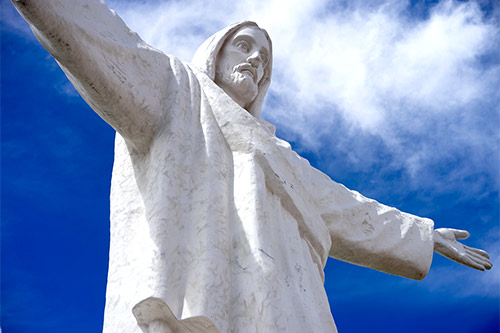
4 White Christ of Cusco
The White Christ is a statue of Jesus Christ located on top of the Pukamoqo hill in Cusco. It was donated in 1945 by the Palestinian Arab colony of Cuzco.
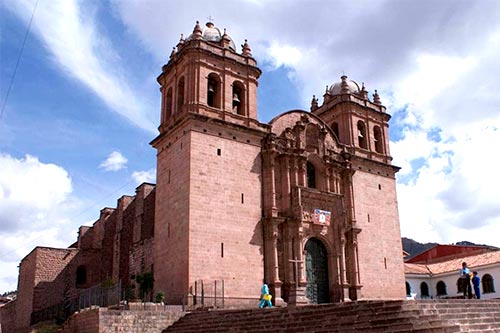
5 Church of Belén in Cusco
The temple was born in 1550 as an Indian parish. The 1650 earthquake caused its rebuilding as a church. Its main effigy is the Virgin of Bethlehem.
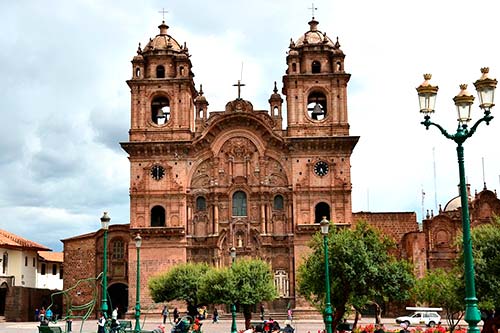
6 Church of the Compañía de Jesús
The Church of the Company of Jesus is a temple located in the Plaza de Armas of Cusco. It is part of the Andean Baroque circuit along with other churches.
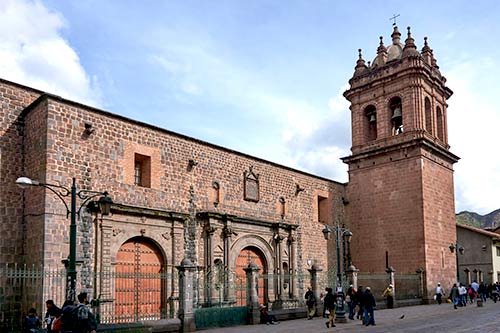
7 Church and convent of Santa Clara in Cusco
This Cusco temple is known as the resplendent church for its interior decoration with mirrors. It was a cloister for mestizo girls of Inca origin.
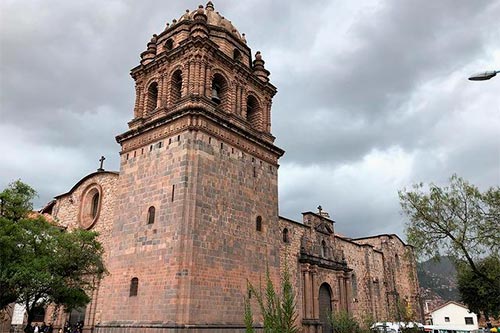
8 Church and convent of Santo Domingo
The church and convent of Santo Domingo is built on the Inca temple of Coricancha. The visit is part of the half-day ‘Cusco City tour’.
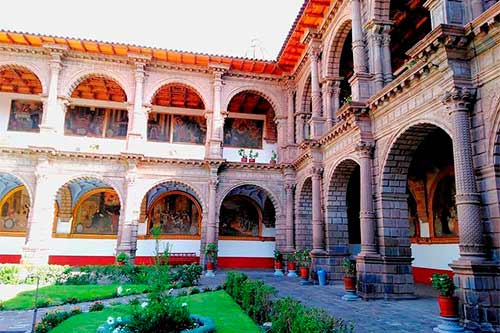
9 Church of La Merced of Cusco
It is near the Main Square of Cusco. It has canvases from the Cuzco school. Also with ‘La custodia de La Merced’ (of gold and precious stones).
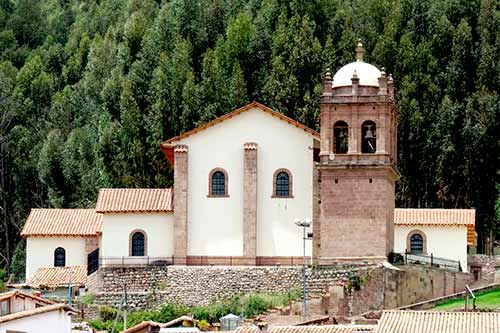
10 Church of San Cristóbal
The San Cristóbal del Cusco Church is 400 meters from the Plaza de Armas. It was built by Paullo Yupanqui, brother of Atahualpa, Huáscar and Manco Inca.
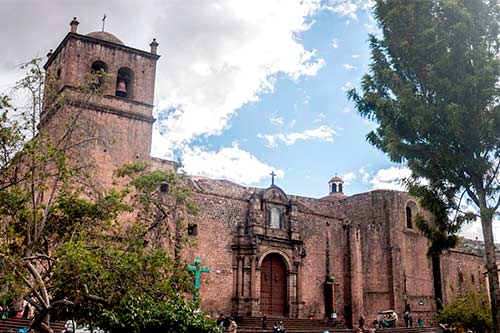
11 Church of san francisco
The church of San Francisco del Cusco has treasures such as the catacombs or the canvas "Genealogy of the Franciscan order", the largest in South America.
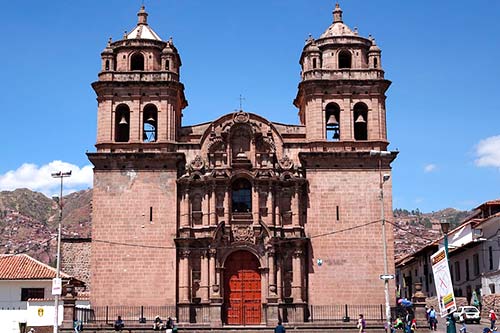
12 Church of San Pedro
The church of San Pedro de Cusco is made of stone. It was an old hospital until the 1650 earthquake. It preserves works of art such as canvases and sculptures.
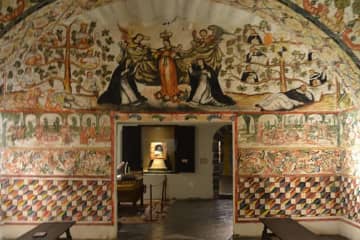
13 Church of Santa Catalina in Cusco
The church was built on an Acllahuasi or house of virgins of the sun. The museum has canvases, murals and more treasures. It is near the main square.
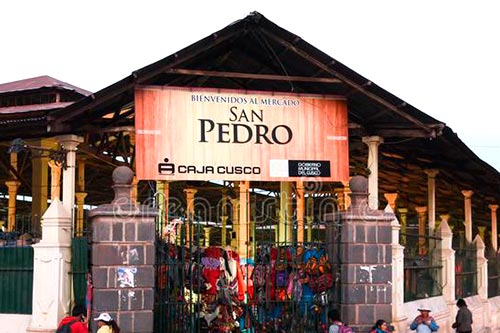
14 San Pedro Market
The San Pedro market is the most popular and oldest in Cusco. It was designed by Gustave Eiffel. It offers food, crafts, restaurants and a lot of culture.
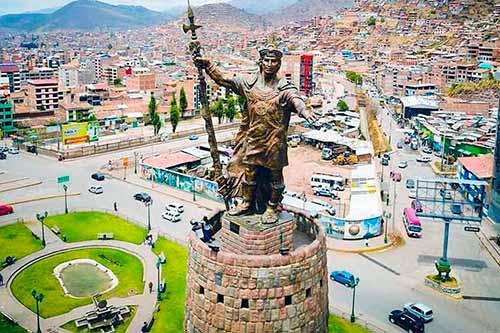
15 Monument to Pachacutec
The monument to Pachacutec is on El Sol Avenue in the city of Cusco. It measures more than 30 meters high. The entrance to the museum costs 2 Peruvian soles.
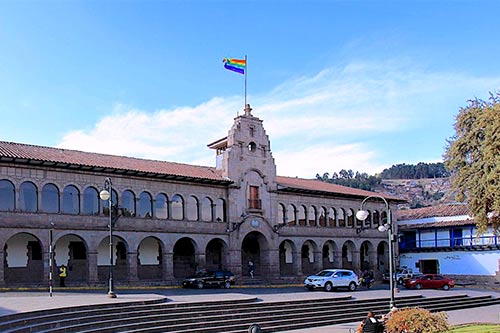
16 Contemporary Art Museum
The museum is located in the municipal palace of Cusco. It has 3 rooms with works by artists such as Edilberto Mérida, Antonio Olave, Hilario Mendívil and more.
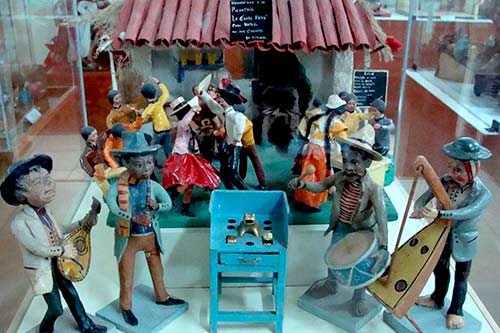
17 Popular art museum
The museum of popular art of Cusco exhibits works by artists such as: Hilario Mendivil, Antonio Olave, Edilberto Mérida as well as works by the famous Santurantikuy.
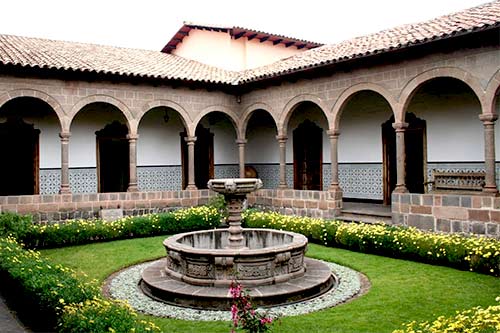
18 Museum of religious art of Cusco
The museum is part of the archiepiscopal palace (former Inca Roca palace). It displays colonial relics such as canvases, sculptures, altarpieces, furniture, and more.
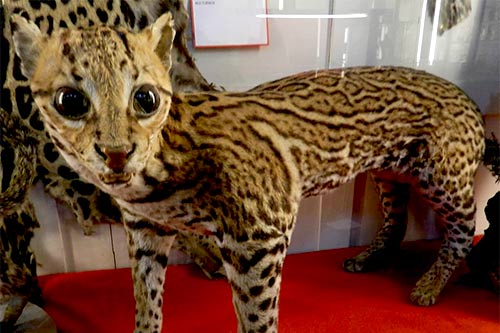
19 Museum of Natural History
The museum houses collections of minerals, animals, plants, insects and even the fang of a mastodon. It is located in the Plaza de Armas of Cusco.
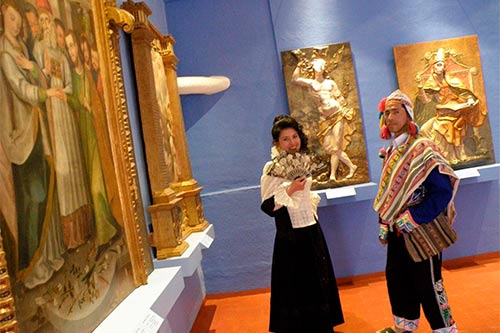
20 Regional Historical Museum
The regional historical museum is in Casa Garcilaso. It exposes the history of Cusco, from its prehistory to colonial times, passing through the Incas.
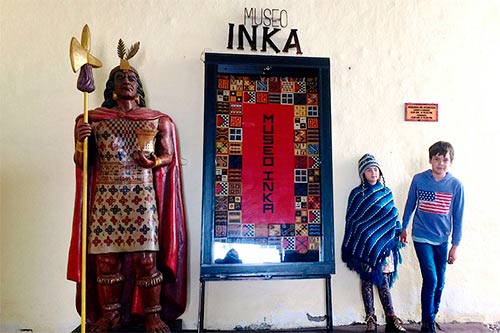
21 Inka Museum of Cusco
The museum has the best collection of Inca objects in Cusco. Its collection of queros, skulls, textiles and more stands out. It is located near the main square.
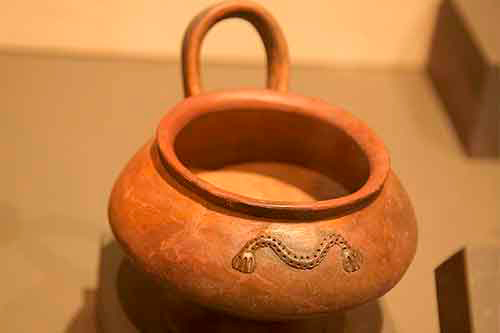
22 Machu Picchu Museum of Casa Concha
The Machu Picchu museum at Casa Concha exhibits Inca objects returned to Peru by Yale University in the USA. It is a few steps from the Plaza de Cusco.
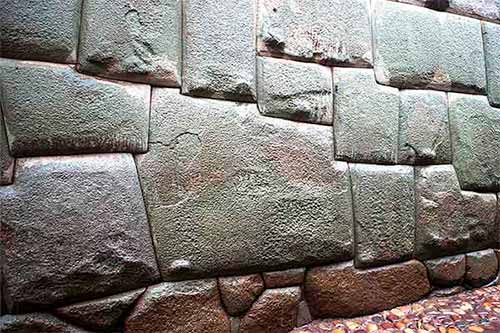
23 Stone of 12 Angles
The 12-angle stone shows elaborate Inca architecture. It was part of the Inca Roca palace. It is on Hatun Rumiyoq street in Cusco.
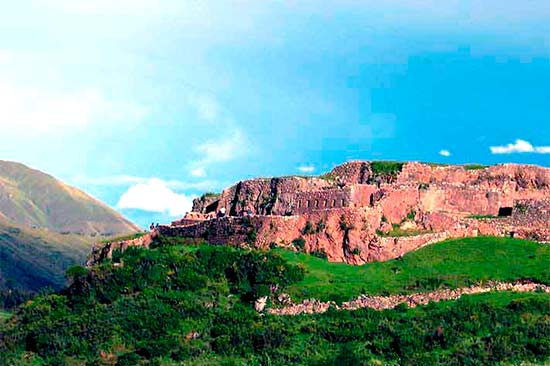
24 Puca Pucara
Puca Pucara is an Inca archaeological site located 10 kilometers from Cusco. Its name means 'Red Fortress' due to the red of its walls at sunset.
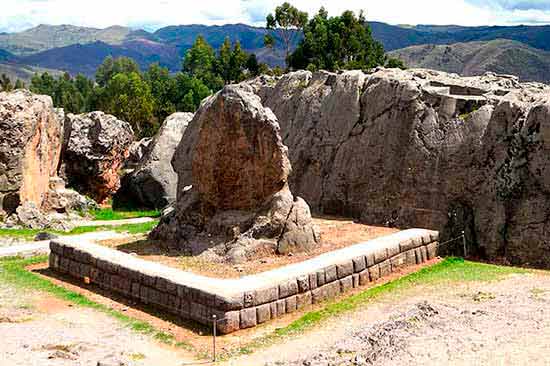
25 Qenqo
Qenqo ‘labyrinth’ in Quechua, is one of the most famous archaeological sites in Cusco. It features an amphitheater, tunnels, a sacrificial room, and more.
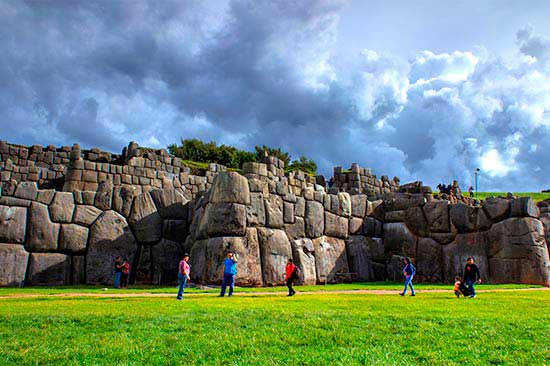
26 Sacsayhuaman
Sacsayhuaman is an Inca fortress in Cusco. It stands out for its huge stone walls. It is one of the most visited along with Machu Picchu and the Sacred Valley.
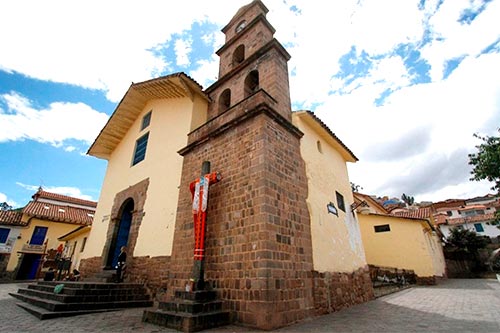
27 San Blas
The neighborhood of San Blas in Cusco is famous for the Stone of the 12 angles, its colonial church, its square, its artisan workshops, bohemian life and more.
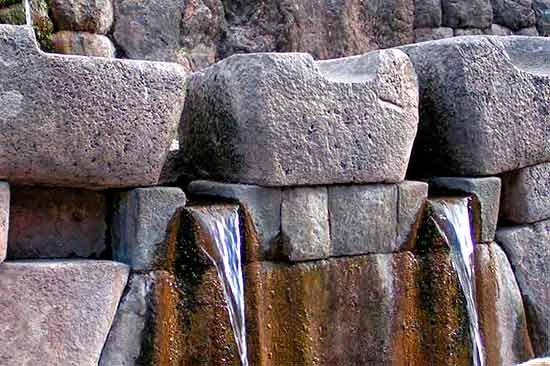
28 Tambomachay
Tambomachay is an Inca site in Cusco famous for its ‘Baños de la ñusta’ and more constructions. It is included in the City Tour and the Cusco Tourist Ticket.
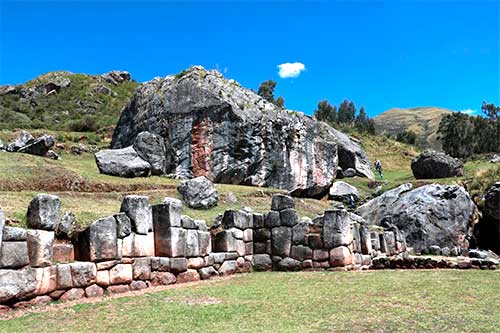
29 The temple of the moon in Cusco
The temple of the moon is in the Qenqo sector. It was a mysterious Inca site. From there you have a panoramic view of Cusco. Entrance is free.
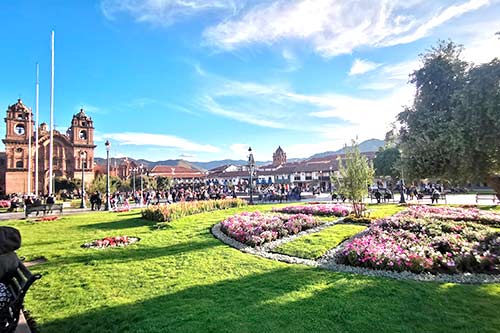
30 Cusco Main Square
The Main Square of Cusco is the center of tourism in the Inca capital city. In Inca times it was part of the Huacaypata. There you can visit the Cathedral.
Tourist attractions of the city of Cusco
Cusco Cathedral
This Christian temple is located right in front of the Main Square in the heart of Cusco. It is the most important Christian temple due to its dimensions and treasures inside. It was built on the palace of the Inca Viracocha. Its construction began in 1538 and lasted almost 100 years. It is made up of 3 temples: the Basilica, the Temple of Triumph and the Temple of the Sagrada Familia. Inside there are paintings from the ‘Cusco school’ as well as ornaments in gold and silver leaf.
- Where is it? In front of the Main Square of Cusco.
- How much? 25 Peruvian soles (8 USD).
- What is the schedule? Monday to Sunday from 10 am. at 6 pm.
Main Square
The main square of Cuzco is the busiest place for tourists in the city. It is a wide square where a pleasant atmosphere is lived with tourists from all over the planet. Important historical events took place there, such as the execution of the descendant of the Incas and rebel Túpac Amaru II in 1781. During the Inca period it was called Huacaypata, a place where important religious ceremonies were developed. The Spanish reduced its size and built churches around it. Currently the square and its surroundings preserve many of its colonial and Inca structures.
- Where is it? In the city center (Calle Plateros 326).
- How much? Free
- What is the schedule? Free all day.
The Coricancha
The Qoricancha was the most important temple in the time of the Incas. Its name comes from a Quechua word that means ‘golden temple’. Its main altars were adorned with gold, silver and precious stones until the plunder of the Spanish invaders. They built a church on the foundations of the Coricancha. Today both temples, the Inca and the Inca and the colonial are a single imposing building. Just as the Incas did, the Qoricancha is the scene of the Inti Raymi Festival (Festival of the Sun), an immense staging of the most important ancient Inca religious ritual that is celebrated in Cusco every June 24.
- Where is it? Intersection of El Sol avenue and Santo Domingo street.
- How much? 15 Peruvian soles (5 USD).
- What is the schedule? Monday to Saturday from 8.30 am. at 5.30 pm.
The Coricancha Inca Temple also offers a visit to the site museum, which exhibits objects found during excavations at this Inca site. It also includes a tour of various rooms that expose the characteristics of this temple, the most important in the entire empire of the Incas.
Sacsayhuaman
The Sacsayhuaman fortress is one of the most mysterious Inca constructions. Its walls are made up of immense rocks, polished and fitted together with incredible perfection. They are rocks of more than 120 tons handled without the necessary modern instruments. It is believed that the Inca Pachacutec had it built in the 15th century. There the Spanish and the Incas fought for control of Cusco. Due to this, some of its structures were destroyed. Currently the famous Inti Raymi is also held there.
- Where is it? Road to Sacsayhuaman (2 kilometers from the Main Square of Cusco).
- How much? Cusco Tourist Ticket 70 soles (23 USD includes Qenqo, Pucapucara and Tambomachay).
- What is the schedule? Monday to Saturday from 7 am. at 5.30 pm.
Qenqo
The archaeological site of Qenqo is famous for its underground galleries and amphitheater. Its name comes from the Quechua word Q’inqu which means labyrinth. This due to the underground channels and on the surface of the earth in a zigzag pattern. Its function may have been religious. However, the true purpose of the enclosure is still a mystery. Possibly it was a shrine to the sun and the Pachamama ‘goddess of the earth’.
- Where is it? Road to Sacsayhuaman (6 kilometers from the Main Square of Cusco).
- How much? Cusco Tourist Ticket 70 soles (23 USD includes Sacsayhuaman, Pucapucara and Tambomachay).
- What is the schedule? Monday to Saturday from 7 am. at 5.30 pm.
Pucapucara
The archaeological site of Pucapucara is a set of terraces and stairs that would have served as a resting place for the Inca army. Its name comes from a Quechua word that means ‘Red Fortress’. This is because its walls take on that color at sunset. On one part of this site, the Incas created a section of their famous road network that linked the main cities of the empire and that received the name ‘Qhapac ñan’ .
- Where is it? Road to Sacsayhuaman (8 kilometers from the Main Square of Cusco).
- How much? Cusco Tourist Ticket 70 soles (23 USD includes Sacsayhuaman, Qenqo and Tambomachay).
- What is the schedule? Monday to Saturday from 7 am. at 5.30 pm
Tambomachay
The archaeological site of Tambomachay is known as the ‘resting place of the Inca’ or simply as ‘the Inca baths’. This building was made of walls, gardens and water channels that create waterfalls and a natural relaxing environment. There the Inca probably rested while his personal troops did so in Pucapucara. That is why its name comes from a Quechua word that means ‘resting place’. Its buildings and canals were of such perfection that water continues to flow perfectly today.
- Where is it? Road to Sacsayhuaman (8.5 kilometers from the Main Square of Cusco).
- How much? Cusco Tourist Ticket 70 soles (23 USD includes Sacsayhuaman, Qenqo and Pucapucara).
- What is the schedule? Monday to Saturday from 7 am. at 5.30 pm.
Museums
Cusco is considered a ‘museum city’. This is because, like nowhere else, in its streets there are Inca and colonial structures such as the Stone of the 12 angles, the Cathedral of Cusco as well as other palaces and temples from both times. In addition, visitors can enter the many museums around the city. The most important are the Coricancha site museum (keeps objects found in the Coricancha), the Casa Concha Museum (exhibits objects found in Machu Picchu) and the Museum of Pre-Columbian Art (exhibits objects from the pre-Inca and Inca times ).
- List of museums: Inca Museum, Regional Historical Museum, Museum of Religious Art, Museum of Popular Art, Garcilaso House Museum, Museum of Contemporary Art.
- How much? Most museums are included in the Cusco Circuit II Tourist Ticket (70 Peruvian soles or 23 USD).
- What are your hours? Most museums open from 9 am. at 6 pm. from Monday to Saturday.
The museums that are not included in the Cusco Tourist Ticket and that are worth visiting are: the Casa Concha Museum, the Inca Museum and the Casa Garcilaso Museum. You can buy the entrance tickets of these museums, at the entrance door of each place. All are located in the Historic Center of Cusco.
Adventure sports
The mountainous geography of Cusco also offers the opportunity to do different adventure sports as well as outdoor activities. The most popular in the city are the horseback riding in Sacsayhuaman, the ATV routes in Pumamarca. One of the most daring options is to do bungee jumping and slingshot in the Action Valley of Cusco. For even more activities, the best option is to visit the Sacred Valley of the Incas.
- List of activities: Horseback riding, ATV routes, bungee jumping, slingshot.
- How much? Tour packages that vary from 40 to 120 dollars.
- What are your hours? Most of the activities take place from 8 am. until 5 pm.
Restaurants and bars
Because tourism is the main economic activity in Cusco, the city has different tourist services such as restaurants, cafes, bars and more. Most are located in the Historic Center and offer quality services to the visitor. People from different parts of the world gather in these places. Some of the good options are: the Chicha restaurant by chef Gastón Acurio, the Limo restaurant (in front of the Main Square of Cusco), the French food restaurant Le Soleil and the Paddy’s Irish Pub and Mushrooms Lounge & Bar.
- List of restaurants and bars: Inti Raymi Restaurant, Yaku, Kusikuy, Carpe Diem Cucina Italiana, Museo del Pisco, República del Pisco, etc.
- How much? Dishes and drinks range from USD 5 to USD 60.
- What are your hours? Most restaurants and bars are open from 12 pm. Until 10 o’clock p.m.
Nightclubs
The city of Cusco offers one of the most famous nightlife in Peru. Visitors from all over the world gather in the discotheques of the Historic Center for the common purpose of having fun. There are electronic, rock, salsa and reggaeton music venues. Some of the most famous venues are Mama Africa (located right in front of the Main Square), the Ukukus Bar (a cultural-themed nightclub), the Chango Club (a varied music disco) and more.
- List of clubs: Mythology (salsa music club), the Loki lodging bar, the Nuevo Mundo Draft Bar (a club that stands out for its craft beer), etc.
- How much? Drinks range from USD 5 to USD 20 (with a 2 x 1 option).
- What are your hours? Most clubs work from 8 pm. at 2 am.
History of Cusco
The pre-Inca Cusco
The discoveries of the first men of Cusco date back 2,000 years before the Christian era. This is demonstrated by the cave paintings found of the so-called ‘Man of Qhorqa’.
However, it was only with the appearance of the Marcavalle and Chanapata cultures (approximately one thousand BC) that a better organization in agriculture and pastoralism began. Both cultures are the predecessors of the Incas, who settled in the place many years later.
The Incas also took aspects of other predecessor cultures that inhabited the Andean region of Cusco such as: the Cotacalle and the Lucre culture. However, it was from the Wari culture or empire that the Incas took more on ceramics, architecture and organizational system.
The origin of the Incas
According to historical sources, the Incas were an ethnic group that was expelled from the highlands by the strong expansion of the Aymara kingdoms that settled there. During the search for new territories they made alliances with other ethnic groups. Thus, after several years, they arrived in Cusco where, under the leadership of Manco Cápac, they founded their new organization in the 13th century.
According to oral tradition, there are two legends that explain the origin of the Incas. The first is the ‘Legend of Manco Cápac and Mama Ocllo’. They were sent by their father the sun with a gold scepter that sank in Cusco as a sign that they should settle there.
The second oral tradition is the ‘Legend of the Ayar brothers’, according to which 4 brothers and their respective wives, seeking a fertile land to settle, arrived in Cusco after several incidents. As a result, Manco Cápac, one of the survivors, founded the new Inca state.
The imperial Cusco
After the Incas settled in Cusco, a period of alliances and wars with the peoples who settled there followed. The first century was called ‘El Curacazgo’ and it was led mainly by Manco Capac and his successors Sinchi Roca, Lloque Yupanqui, Mayta Capac, Capac Yupanqui, Inca Roca, Yahuar Huacac and Huiracocha.
The second century since its foundation is known as the ‘Tahuantinsuyo’ or imperial period because it was characterized by a territorial development that reached the current countries of Peru, Colombia, Ecuador, Bolivia, Chile and Argentina. The great leader was Pachacutec (the builder of Machu Picchu). He was succeeded by Túpac Yupanqui, Huayna Capac, Huascar and Atahualpa who was executed by the Spanish in 1533.
The arrival of the Spanish in Cusco
The Spanish arrived in Cusco in the midst of a civil war between the brothers heirs to the Inca throne Huáscar and Atahualpa. The latter had Huascar executed. The Spanish captured him and had him executed in Cajamarca. Then they began their march to the city of Cusco where they looted the Inca temples, stole the treasures and founded the colonial city in 1524.
Then there was a period of distribution led by Francisco Pizarro. The Spanish managed to establish alliances with the ancient Inca leaders to obtain some privileges. However, a group of Inca rebels, led by Manco Inca, fought them in Sacsayhuaman, Ollantaytambo and settled in Vilcabamba as a threat for almost 40 years. Finally the rebels were exterminated with the assassination of Túpac Amaru I in 1572.
Colonial Cusco
The colonial era in Cusco lasted from 1572 to 1821, the date on which the Independence of Peru was declared. This period was characterized by the exploitation of the Indian, the wars between the Spanish (the Almagristas and Pizarristas factions) and the construction of colonial mansions and Christian temples on the foundations of the ancient Inca temples.
In 1780, Cusco was the scene of one of the largest rebel demonstrations in the colony. The mestizo leader was finally executed in the city’s Main Square. The struggles for independence in Cusco followed one another in the following years with the uprisings of the Angle brothers (1814) and other conspiracies. Finally, Cusco was free although it inherited many aspects of the Inca and Spanish culture.
Cusco in the Republic of Peru
It was not until 1824 (the Battle of Ayacucho) that the Spanish accepted the independence of Peru and left Cusco. The first ruler of the city was the pro-independence general Agustín Gamarra. This period was characterized by an opening to new industries to favor the landowners and to the detriment of the Indians who continued to be exploited by the new rulers. Cusco was gradually changing with the construction of important public works such as the San Antonio de Abad University in 1692. Likewise, the Inca and Spanish heritage was manifested in the fervent religiosity of the population (the festivities of Corpus Christi, the Lord Tremors and the Inca festival of Inti Raymi).
Cusco today
Due to the Inca and Spanish heritage (with imposing buildings such as Machu Picchu), Cusco became the main tourist destination in Peru. Some of the most visited Inca monuments are the Coricancha, Sacsayhuaman, Pisac, Ollantaytambo and Choquequirao. Only Machu Picchu receives more than 1.5 million visitors each year.
The city of Cusco has an airport that receives mainly flights from Lima, the capital of Peru. The Historic Center preserves its colonial mansions and Inca temples. The rest of the city is undergoing a modernization process. Despite the centuries, the population speaks Quechua (the language of the Incas) and preserves many of the traditions of their ancestors.
Images of Cusco during its history
Information and tips for your visit to Cusco
Cusco is 3,399 meters high (11,151 ft)
The city of Cusco is in the Andes Mountains of southern Peru. It rises to 3,399 meters above sea level (11,151 ft) so tourists can feel the symptoms of ‘altitude sickness’ such as: nausea, fatigue, headache, difficulty breathing or sleeping. These symptoms are mild and disappear quickly as the body is conditioned to the geography of high altitude. A good idea to reduce the effects of altitude sickness is to drink plenty of water (not alcoholic beverages) such as mate de coca, an infusion made from the coca leaf, the sacred plant of the Incas.
The airport is close to the city
In the city of Cusco is the Alejandro Velasco Astete airport, which receives flights from Chile and Bolivia and several destinations in Peru. The vast majority of tourists arrive in Cuzco after a flight from Lima’s international airport (it receives flights from the United States, Spain, Europe and all of Latin America). Once at the Cusco airport, the tourist must get a taxi to their hotel in the center of the city. The distance is approximately 6 kilometers. The cost of the taxi is approximately 20 Peruvian soles (6 dollars). Keep in mind that in Peru there are no taxis with a mileage meter, so you must negotiate the rate with the taxi driver.
Bundle up at nights
The climate of Cusco is temperate with cold at night. During the day the average temperature is 17ºC. (62.6ºF). At night it can drop to an average temperature of 6ºC. (42.8ºF). Therefore, it is recommended that the tourist wear something light during the day and bundle up at night. Also know that from November to March the rains are more constant (especially in February) so you should bring a rain poncho or umbrella. The rest of the year the climate is dry, with less frequent rains, but colder at night. Of course, the climate in Machu Picchu is hotter so it is not necessary to bundle up too much.
Carry money in soles and dollars
The official currency of Peru is the ‘Peruvian Nuevo Sol (S /.)’ Which is worth approximately one third of 1 US dollar. In Cusco most businesses accept payment in Peruvian soles as well as in US dollars (even a few accept the euro). However, many times, the exchange rate favors business. Therefore, it is advisable to change an amount of money in Peruvian soles. In the city center there are many automatic teller machines (ATMs) that accept all kinds of cards. If you are paying by card, remember that some businesses charge an extra fee for the process.
Learn a little spanish
The official language of Peru is Spanish and the native languages that are spoken in each region of the country (there are more than 48 native languages). In Cusco, most of the people are bilingual because they speak Spanish and Quechua, the language they inherited from the Incas. Only some people who work in tourism know English and other languages. Therefore, it is recommended that you practice a little Spanish before your trip. Also, if you are good at languages, you can learn some Quechua. Remember that the trip to Cuzco can be a great opportunity to learn more about the culture of Peruvians and Cuzco.
Machu Picchu is more than 100 kilometers away
If the objective of your trip to Cuzco is to visit Machu Picchu, know that the Inca wonder is more than 100 kilometers from the city. To get there you will have to take a train and bus trip that lasts approximately 4 hours. There are also other ways to go, such as the alternative route through Hidroeléctrica (8 hours of bus travel and part of the walk) or the famous Inca Trail (4-day walk that includes all organized camping). As well as Machupicchu, other tourist destinations are far from the city such as the Mountain 7 Colors, the Humantay lagoon and the Sacred Valley of the Incas.
Most tourists come to Machu Picchu from Cusco by train. However, there are also other options such as a) The Inca Trail (4-day, 3-night hiking route) and b) The alternative route through Hidroeléctrica (7-hour adventurous route that includes a 2-hour walk.
There are luxurious and cheap hotels
Most tourists decide to stay in the city of Cusco because it has a varied offer of hotels and lodgings of all prices. There are 5-star hotels that cost $ 400 a night (JW Marriot, Palacio del Inca, Belmond Hotel). There are also shared lodgings that cost $ 10 a night (Loki Hostel, Inca Wild Hostel, Pirwa Cusco Hostel). It is recommended to make your reservation in advance online, although some tourists find rooms once in Cuzco. In the Sacred Valley of the Incas and Machu Picchu town there are also varied hotel offers but most visitors prefer to do so in the city.
There are restaurants from $ 3
Peru is considered one of the best gastronomic destinations in the world. In Cusco, tourists can enjoy Peruvian food from $ 3. There are simple restaurants in the markets where for that amount you can taste the lomo saltado, the ají de gallina, fried trout and even the ceviche (emblematic dish of the country). You can find inexpensive restaurants in the San Pedro and San Blas markets. Of course, in Cuzco there are also luxurious restaurants where the menu items can cost $ 40 or more (Le Soleil Restaurant, Chicha de Gastón Acurio, El Mariscal. There are also options for vegetarians and vegans (Green Point Restaurant, Vida Vegan Vistro , El Encuentro) Good appetite!
Cusqueños are very friendly
If Peruvians are friendly, Cuzco are much more friendly. About 1 million people live in the Cuzco region. Most are hospitable to tourists. Do not miss the opportunity to learn more about the people of Cusco and their culture: their language, their beliefs, their lifestyle, etc. Of course, in the Historic Center there are many handicraft vendors who will insist that you buy their products. Have a little patience and smile. In the city people are used to tourists and always try to offer you a pleasant experience.
Cusco is one of the safest cities in Peru
The Historic Center of Cuzco, a concentration point for hotels, restaurants, bars and, therefore, tourists; It is safe. The streets have surveillance cameras and the police patrol the streets. Of course, as in all South American countries, there are a few thieves (especially at night and outside of the Historic Center area). However, know that Cuzco is one of the safest cities in Peru. If you have an emergency during your trip, you can contact the Peruvian police at +51 84 246088/84 252222 – annex 208. You will surely not need it and you will enjoy your trip without complications.